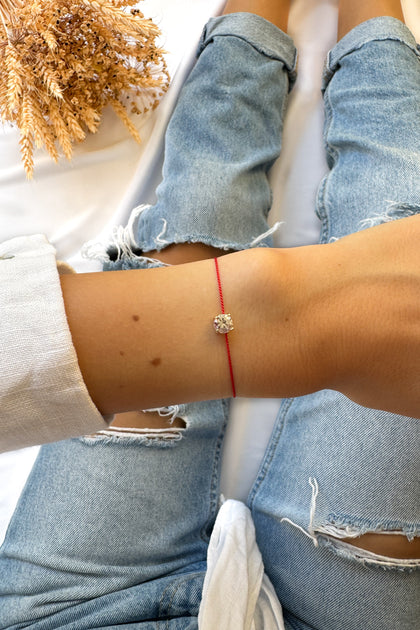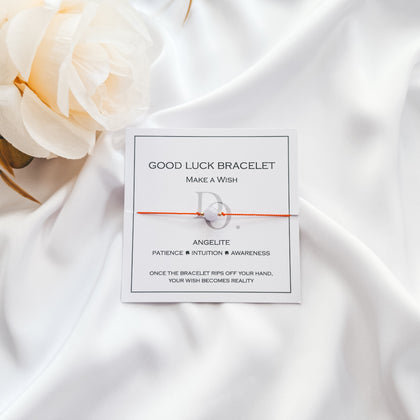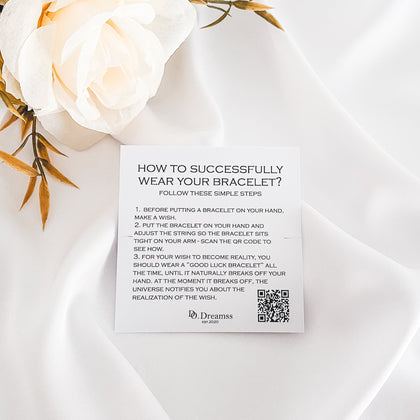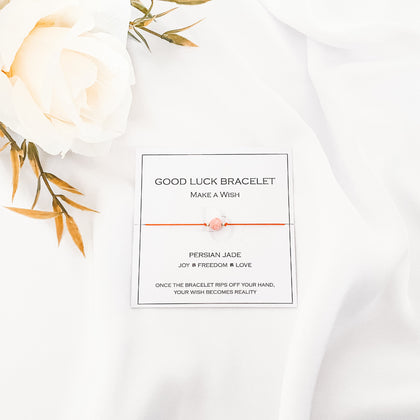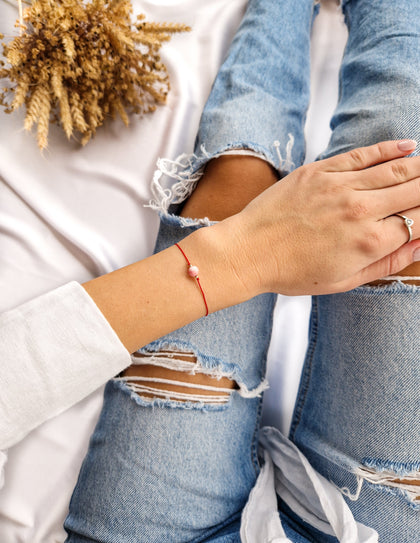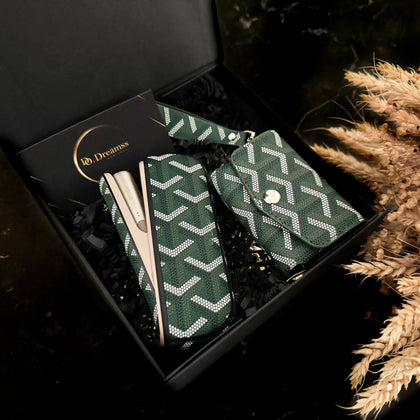The Lucky Edit by Do.Dreamss
Best Jewelry for Sensitive Skin: Natural Materials That Work
Best Jewelry for Sensitive Skin: Natural Materials That Work
Living with sensitive skin often means navigating a complicated relationship with jewelry. That beautiful necklace or perfect pair of earrings can quickly turn from fashion statement to irritation nightmare when your skin reacts. The culprit is typically contact dermatitis triggered by common metals like nickel or copper found in many jewelry pieces, leaving behind redness, itching, or even painful blisters.
But sensitive skin doesn't mean you must forego adorning yourself with beautiful accessories. The key lies in understanding which materials work harmoniously with reactive skin and which ones to avoid. This comprehensive guide explores the world of hypoallergenic jewelry, focusing on natural materials that not only look stunning but also keep your skin comfortable and reaction-free. You'll discover how to select pieces that combine style with safety, ensuring your jewelry enhances rather than inhibits your everyday life. Learn more about hypoallergenic jewelry origins and innovations as we dive into this fascinating intersection of beauty and skin health.
Understanding jewelry allergies and sensitive skin
Jewelry allergies affect millions of people worldwide, often manifesting as an uncomfortable reaction where metal touches skin. These reactions aren't simply sensitivity but true allergic responses—your immune system identifying certain metals as harmful invaders and launching a defensive reaction.
The primary culprit in jewelry allergies is nickel, affecting an estimated 10-20% of the population. This common metal appears in countless jewelry pieces as an inexpensive base material or alloy component. Other frequent offenders include copper (often found in brass and bronze), cobalt, and even traces of metals in supposedly "pure" materials.
When your skin encounters these allergens, the reaction typically includes: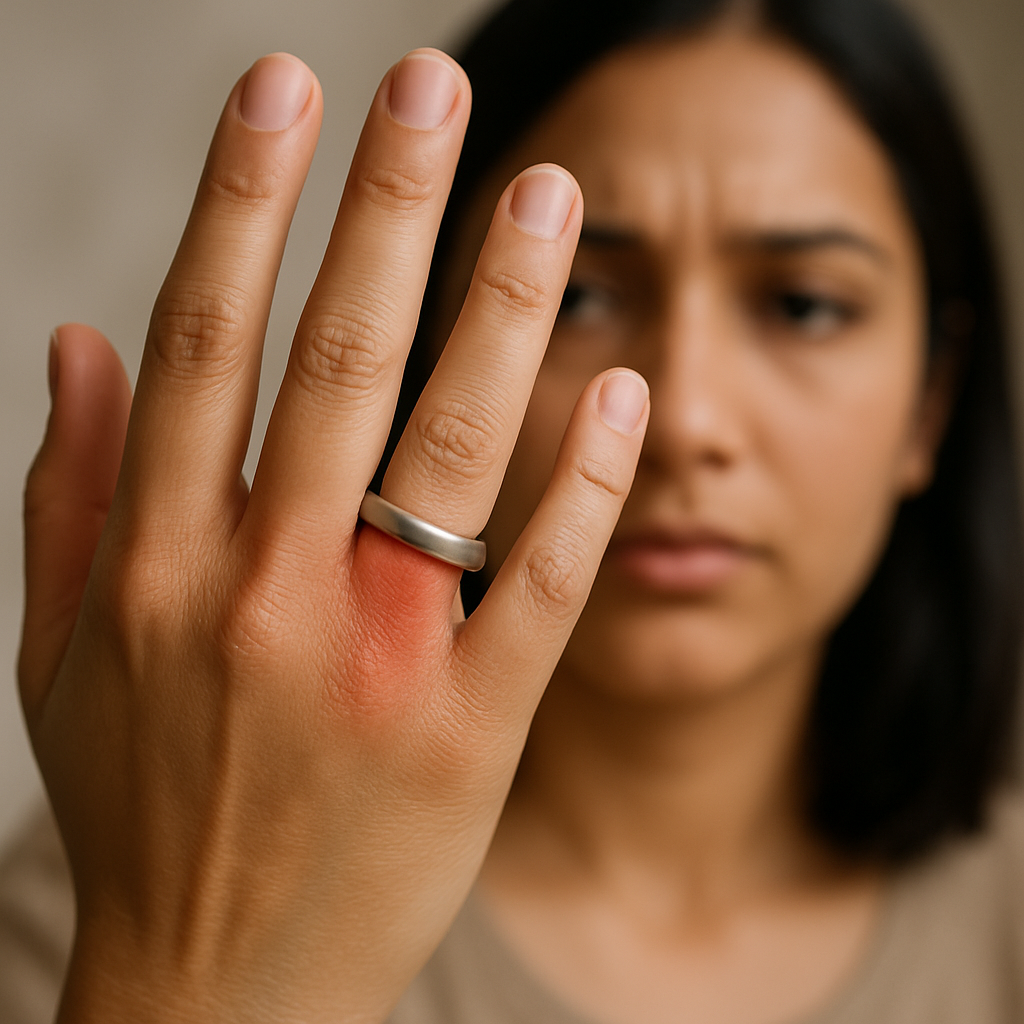
- redness and inflammation at the contact site
- itching or burning sensations
- small blisters or rashes
- dry, cracked skin in the affected area
- swelling or tenderness
The intensity can range from mild discomfort to severe reactions requiring medical attention. What makes jewelry allergies particularly frustrating is their delayed nature—symptoms might appear hours or even days after initial contact, making it difficult to identify the specific trigger.
It's important to distinguish between true allergic reactions and simple irritation. Irritation typically resolves quickly when the item is removed, while allergic responses can persist and worsen over time with repeated exposure. According to the National Institute of Allergy and Infectious Diseases, once you develop a metal allergy, it generally remains for life, highlighting the importance of identifying and avoiding your specific triggers.
If you experience persistent reactions to jewelry, consulting a dermatologist is advisable. They can perform patch testing to precisely identify your specific metal allergies, providing clarity for future jewelry purchases.
Materials to avoid: what triggers jewelry allergies?
Understanding which materials commonly cause reactions is the first step in selecting jewelry that works for your sensitive skin. Certain metals and alloys are particularly problematic and worth avoiding entirely.
Nickel stands as the most notorious allergen in jewelry, affecting more people than any other metal. This silvery-white metal is extraordinarily common in costume jewelry, watches, and even in items labeled "stainless steel" or "white gold." Its prevalence stems from its affordability and durability, making it a favorite filler metal for manufacturers looking to reduce costs.
Copper and brass also rank high on the list of problematic materials. While pure copper jewelry exists, it more commonly appears as an alloy component. Brass, a copper-zinc mixture, often causes reactions in sensitive individuals. Rose gold derives its distinctive color from copper content, explaining why some people react even to this precious metal variant.
Plated jewelry presents a particular hazard for those with sensitive skin. These pieces feature a thin coating of precious metal over a base of less expensive materials—typically containing nickel or copper. As the plating wears away through normal use, the allergenic base metals contact skin directly. Even high-quality plating eventually deteriorates, making these items temporary solutions at best.
Standard stainless steel, despite its reputation for hypoallergenic properties, often contains 8-12% nickel. Only specific grades like 430 or surgical stainless steel (316L) have low enough nickel content to be considered safer options.
Lower-karat gold presents another common issue. Pure gold (24K) rarely causes allergic reactions, but it's too soft for everyday jewelry. To increase durability, gold gets mixed with other metals—often nickel in white gold or copper in yellow and rose gold varieties. The lower the karat number, the higher the percentage of these potential allergens.
When examining jewelry for potential reactivity:
- check for stamps indicating metal content (like 925 for sterling silver)
- ask retailers about specific alloy compositions
- be wary of vague terms like "hypoallergenic" without specific metal information
- research manufacturer practices and reputation for sensitive skin products
Remember that even expensive jewelry can contain allergenic metals if not specifically designed for sensitive skin. Price point doesn't guarantee compatibility with your unique body chemistry.
Natural & hypoallergenic materials for sensitive skin
Finding jewelry that combines beauty with body compatibility doesn't mean sacrificing style. Several natural and hypoallergenic materials offer both aesthetic appeal and remarkable skin-friendliness for those with sensitivities.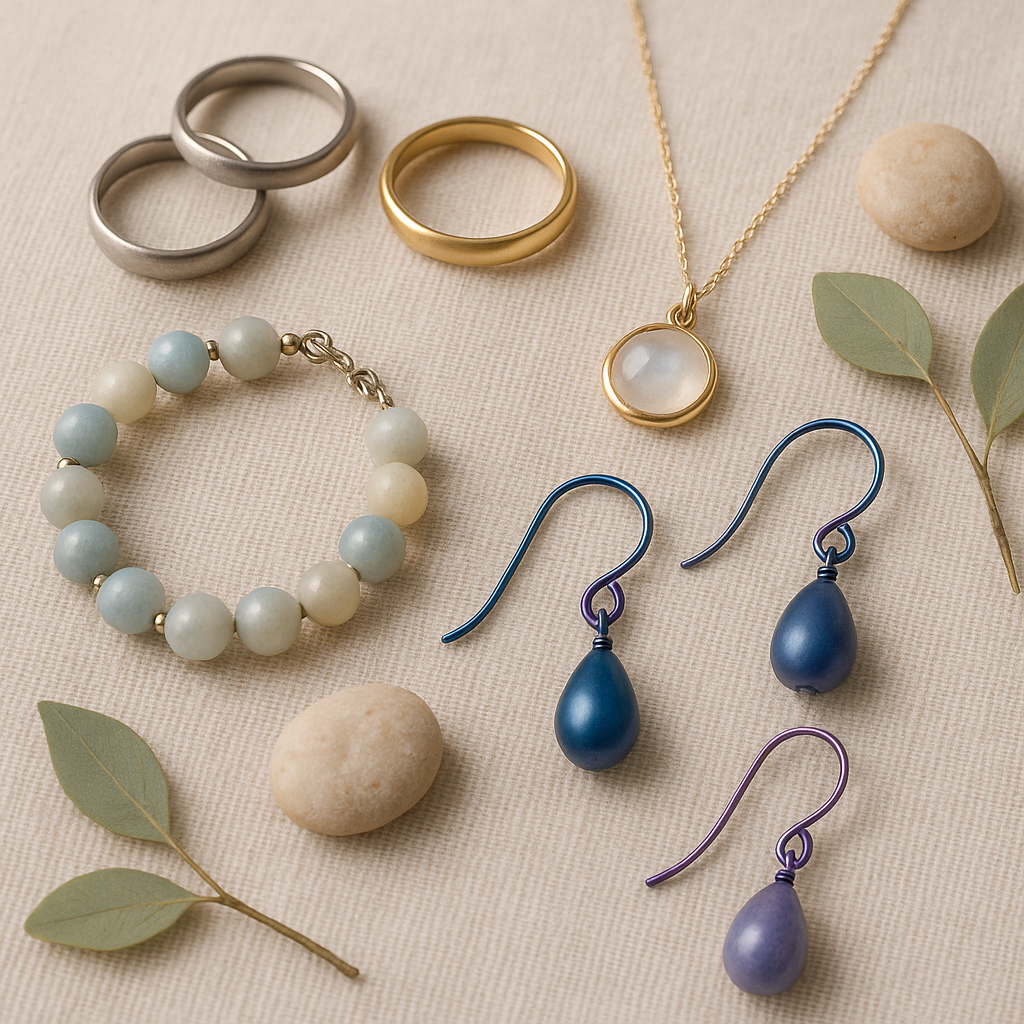
Platinum stands as perhaps the gold standard for sensitive skin jewelry. This naturally white precious metal is typically used in very high purity (95-98%) in jewelry, minimizing alloy components that might cause reactions. While platinum's weight and density create substantial, luxurious pieces, these same qualities make it perfect for secure stone settings and everyday wear. Its natural whiteness never fades or tarnishes, eliminating the need for rhodium plating that white gold requires. The primary drawback is cost—platinum typically commands prices significantly higher than gold.
Titanium offers remarkable strength-to-weight properties that make it ideal for contemporary jewelry designs. This naturally hypoallergenic metal contains no nickel and resists corrosion from skin oils and moisture. Its lightweight nature makes it particularly suitable for larger earrings that might otherwise strain earlobes. Available in its natural silvery-gray or anodized in various colors, titanium provides versatility for different style preferences. Its exceptional durability makes it a popular choice for wedding bands that can withstand daily wear.
Niobium remains relatively unknown to many jewelry shoppers despite its excellent hypoallergenic properties. This soft, ductile metal works beautifully for earrings and can be anodized to create vibrant, eye-catching colors from purples to blues and greens. Unlike titanium, niobium can be formed into more intricate shapes without specialized tools, allowing for more delicate, artistic designs. Its natural state is slightly darker than titanium, with a subtle warmth that some prefer over starker metals.
High-karat gold (18K and above) significantly reduces the presence of allergenic metals through higher pure gold content. While 24K gold remains too soft for most jewelry applications, 18K provides a good balance of durability and purity with 75% gold content. For those with extreme sensitivity, solid gold pieces eliminate the risk of base metal exposure that plated items pose. Yellow gold typically causes fewer reactions than white or rose varieties, as it usually contains less nickel and copper in its alloy mixture.
Sterling silver (92.5% pure silver with 7.5% other metals) works well for many with mild sensitivity, especially when properly cared for. Traditional sterling contains copper as its hardening alloy, which can occasionally cause reactions in extremely sensitive individuals. Newer argentium silver formulations replace some copper with germanium, creating a more tarnish-resistant and potentially more hypoallergenic alternative. Fine silver (99.9% pure) offers the highest purity but limited durability for everyday pieces.
Tantalum, while less common, deserves consideration for its exceptional properties. This dense, dark gray metal resists scratching and maintains its appearance without tarnishing. Its hypoallergenic nature and resistance to body fluids make it particularly suitable for body piercings and men's wedding bands. Though typically more expensive than titanium, tantalum offers a distinctive gunmetal appearance that appeals to those seeking something unique.
Natural stones and organic materials provide excellent alternatives when metals remain problematic. Glass beads, ceramic components, and sealed wood elements create distinctive jewelry free from metal allergens. Quality pearls, particularly those without metal drilled holes or settings, offer classic elegance without irritation. Properly sealed resin jewelry can incorporate colors and designs impossible with traditional materials while remaining gentle on sensitive skin.
For those with particularly troublesome reactions, consider jewelry that minimizes skin contact altogether. Pendant necklaces that rest on clothing rather than skin, earrings with plastic or silicone backs, and bracelets with fabric components can all reduce potential irritation points.
Discover our curated collection of hypoallergenic jewelry pieces crafted from these skin-friendly materials, combining beauty with comfort for even the most sensitive skin types.
How to shop for allergy-safe jewelry
Finding truly hypoallergenic jewelry requires more than simply trusting product descriptions. A strategic approach to shopping helps ensure you invest in pieces that won't trigger reactions.
Understanding product labels and marketing terms is essential when shopping for sensitive skin jewelry. "Hypoallergenic" lacks standardized regulation and often means little more than "less likely to cause allergic reactions" without specifying actual material composition. Instead, look for specific material declarations like "nickel-free," "pure titanium," or "platinum 950" that clearly identify the metal content.
When purchasing in person, come prepared with direct questions about material composition:
- what specific metals make up the piece?
- is the item solid or plated?
- if gold, what other metals comprise the alloy?
- for stainless steel, which specific grade is used?
- are there any coatings or treatments that might wear off?
Reputable jewelers will readily provide this information or obtain it from manufacturers.
Be wary if you receive vague answers or if the salesperson seems unfamiliar with allergy concerns—these are red flags suggesting they may not truly understand their products' composition.
When shopping online, look for retailers who specialize in hypoallergenic jewelry or clearly detail their materials. Established brands with transparent production processes typically provide more reliable information than marketplace sellers with limited product descriptions. Customer reviews can offer valuable insights, particularly those mentioning sensitivity issues.
Certification and standards provide another layer of verification. The European Union's Nickel Directive restricts nickel release in products with prolonged skin contact, making EU-compliant jewelry generally safer for those with nickel sensitivity. Some manufacturers also obtain certification from independent testing labs verifying nickel-free claims.
Before committing to expensive pieces, consider testing methods:
- wear the item for a limited time initially, monitoring for reactions
- use at-home metal testing kits that detect nickel presence
- check return policies before purchasing, ensuring you can return unworn items if they don't work for you
Many specialty retailers offer sample or tester products specifically for sensitive customers. These allow you to verify compatibility before investing in higher-priced pieces. The American Academy of Dermatology recommends patch testing new jewelry on the inside of your wrist for several hours before wearing it normally, as this area typically shows reactions quickly.
Building relationships with jewelers who understand sensitivity concerns can prove invaluable. These professionals can help source appropriate materials, suggest alternatives, and even create custom pieces that meet your specific needs. For the latest guidance on shopping smart for sensitive skin, browse the latest tips in jewelry news from trusted industry sources.
Caring for sensitive skin jewelry: cleaning & maintenance tips
Proper maintenance of hypoallergenic jewelry not only extends its lifespan but also prevents deterioration that could expose allergens or create skin irritation. Different materials require specific care approaches to maintain their skin-friendly properties.
For precious metals like platinum, gold, and silver, gentle cleaning preserves both appearance and skin compatibility. Create a mild cleaning solution using warm water and a few drops of gentle, phosphate-free soap (never harsh detergents or chemicals).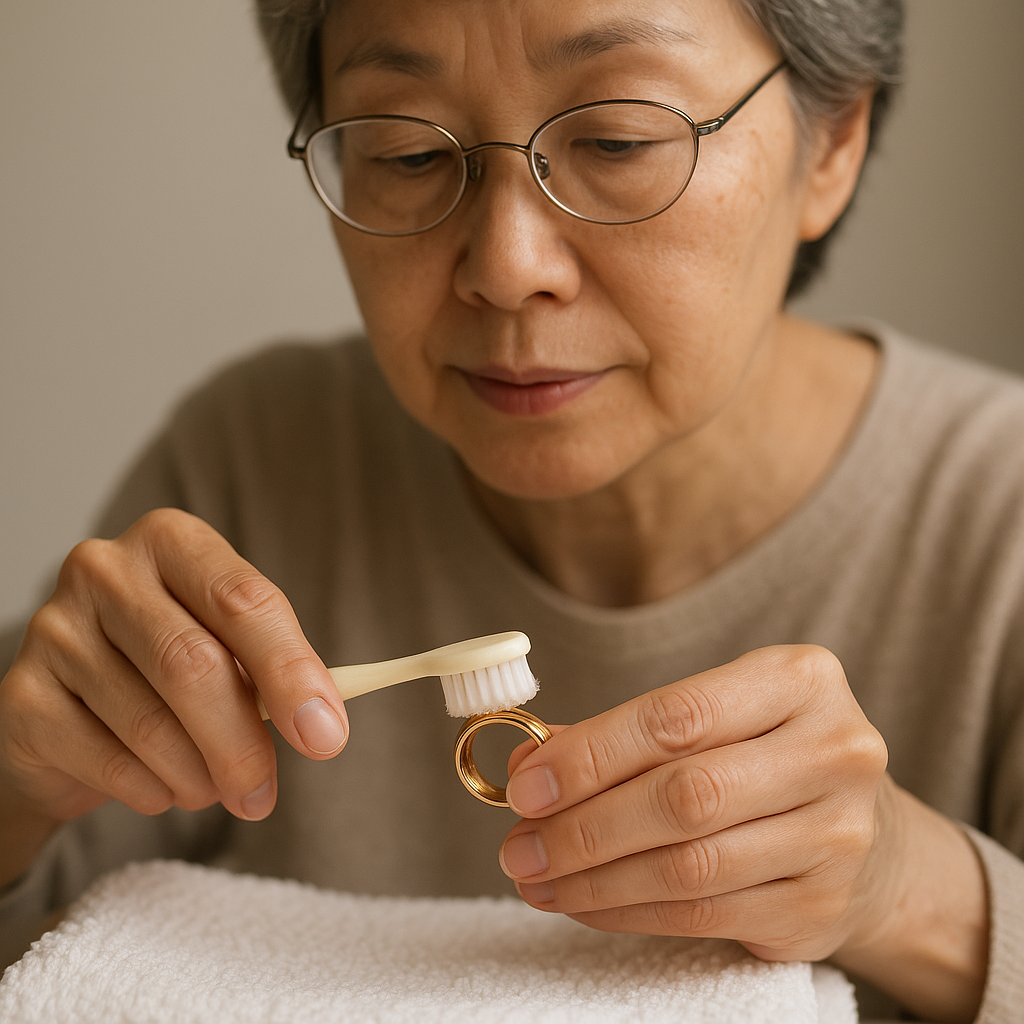
Soak items briefly, then gently scrub with a soft-bristled brush like a baby toothbrush to remove dirt from crevices. Rinse thoroughly and pat dry with a lint-free cloth. This approach removes skin oils, cosmetic residue, and environmental contaminants that might otherwise trap allergens against the skin.
Titanium and niobium jewelry benefit from similar gentle cleaning, though these metals can withstand slightly more vigorous treatment if needed. Their corrosion resistance makes them particularly forgiving, but avoid abrasive cleaners that might scratch their surface finish or remove colored anodization layers.
For stone-set pieces, consider the specific needs of each gemstone. Many stones (like pearls, opals, and turquoise) are porous or sensitive to chemicals, making commercial jewelry cleaners potentially damaging. When in doubt, stick with the gentle soap solution method or consult a professional jeweler for specific cleaning recommendations.
Proper storage plays an equally important role in maintaining hypoallergenic properties:
- store pieces separately to prevent scratching and metal transfer
- use anti-tarnish bags or strips for sterling silver
- keep jewelry in low-humidity environments
- consider airtight containers for particularly reactive metals
- store away from direct sunlight to prevent discoloration of certain materials
Regular inspection helps catch potential problems before they affect your skin. Check for signs of wear like thinning plating, exposed base metals, or loose stones. Clasps and earring posts often show wear first, so examine these areas carefully. If you notice green or black discoloration on your skin after wearing a piece, it indicates metal reaction or tarnish that requires immediate attention.
Preventive habits also protect both your jewelry and skin. Remove jewelry before swimming (chlorine and salt water can damage many metals), exercising (perspiration accelerates tarnishing), and applying lotions or perfumes (chemicals can react with metal surfaces). Putting jewelry on after personal care products have fully dried reduces the transfer of potentially irritating substances.
For valuable or frequently worn pieces, professional cleaning once or twice yearly helps maintain their hypoallergenic properties. Jewelers can deep clean, check for structural issues, and reapply protective coatings if appropriate. This preventive maintenance proves particularly important for items with complex settings or those showing signs of wear.
Even the most hypoallergenic materials benefit from occasional "rest periods" where the jewelry isn't worn, allowing any minor skin irritation to resolve completely. This practice helps distinguish between true allergic reactions and temporary irritation from environmental factors.
Discover our selection of hypoallergenic earrings crafted specifically for sensitive ears, designed to minimize irritation while maximizing style.
Conclusion
Finding jewelry that complements sensitive skin isn't merely about avoiding reactions—it's about discovering materials that allow you to express your personal style confidently and comfortably. The journey to allergy-safe jewelry begins with understanding your specific sensitivities and continues with thoughtful material selection and proper maintenance.
Natural materials like platinum, titanium, high-karat gold, and niobium offer excellent options for those with metal sensitivities. These hypoallergenic alternatives provide both beauty and comfort without compromising on style or quality. For those with extreme sensitivity, non-metallic options like quality glass, ceramic, and properly sealed organic materials open up even more possibilities.
Remember that investing in higher-quality pieces often proves more economical in the long run. While hypoallergenic jewelry may carry higher initial costs, the comfort, durability, and versatility these pieces provide deliver greater value over time compared to repeatedly replacing problematic costume jewelry.
The jewelry industry continues evolving to meet the needs of sensitive-skinned consumers, with more manufacturers recognizing and addressing these concerns. By staying informed about materials, asking the right questions when shopping, and properly maintaining your pieces, you can build a jewelry collection that enhances your appearance without compromising your comfort.
Your sensitive skin doesn't have to limit your jewelry options—it simply guides you toward better-quality, more thoughtfully crafted pieces that work harmoniously with your body chemistry. With this knowledge, you can confidently select jewelry that feels as good as it looks, enhancing your personal style while keeping your skin happy and healthy.
Explore the latest jewelry trends and allergy-safe advice to continue expanding your options for beautiful, comfortable accessories that celebrate your unique style without sacrificing comfort.
FAQ
What is the safest jewelry material for sensitive skin?
Platinum and titanium are widely considered best due to their hypoallergenic properties. High-karat gold and niobium are also excellent choices.
Can I wear plated jewelry if I have a metal allergy?
Plated jewelry often uses base metals like nickel, brass, or copper, which can trigger reactions once the plating wears. For sensitive skin, solid hypoallergenic metals are a safer investment.
Is sterling silver OK for sensitive ears?
Sterling silver (92.5% pure) is usually safe, but verify that it doesn't contain trace nickel. Fine or pure silver (99.9%) is safest if you are extremely sensitive.
How do I know if jewelry is "hypoallergenic"?
Look for labels like "nickel free," "allergy safe," or "pure" and buy from trusted brands. Ask for metal composition details when in doubt.
What are symptoms of a jewelry allergy?
Common symptoms include redness, itching, swelling, or blistering where jewelry touches the skin.


